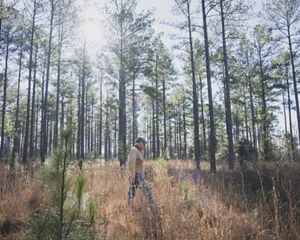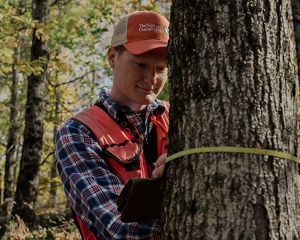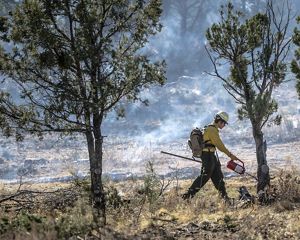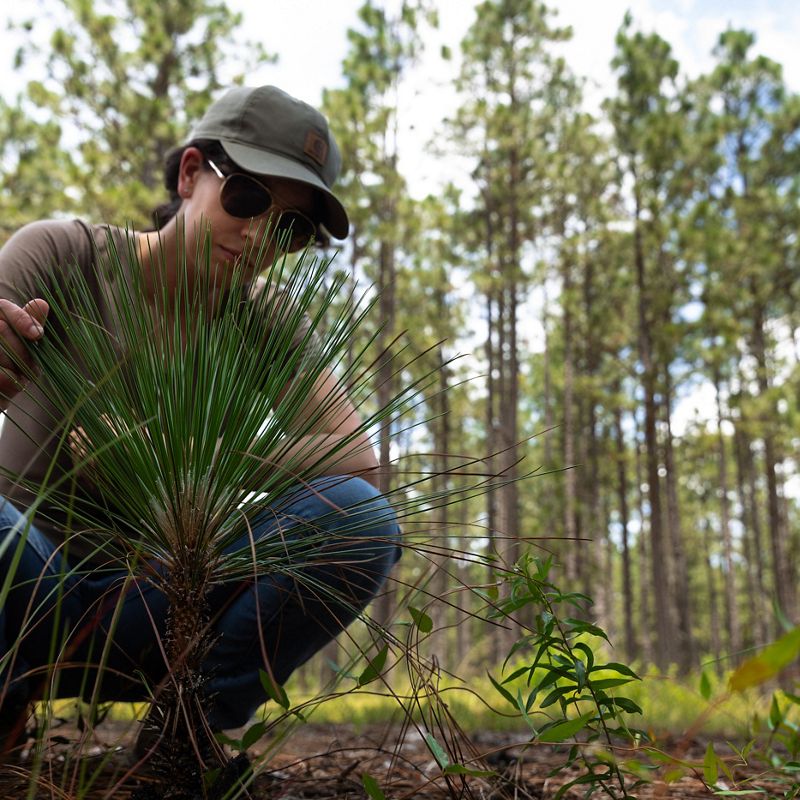
Reforestation runs in the family
On their land in North Carolina’s Sandhills, the Thiel family has been reforesting and sustainably managing longleaf pine forests for generations.
“Your father and I burned the woods last night.”
Leslie Thiel didn’t know what to think when her mother told her about setting fire to their family’s land in North Carolina.
“You did what?” she asked from her temporary home while living abroad in Spain at the time.
Little did Leslie know that many years later she would not only join her parents with a drip torch in hand, but she would also usher her daughter Leah into the family profession.
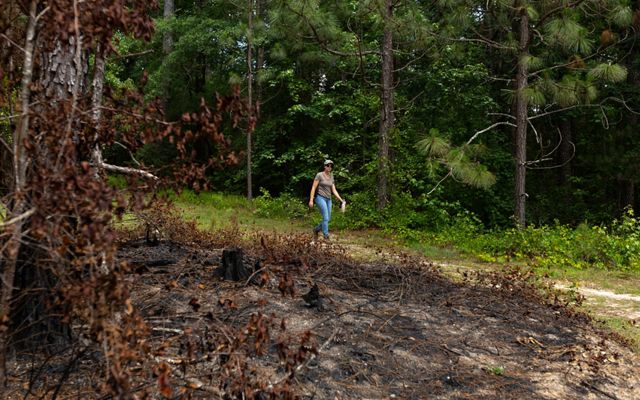
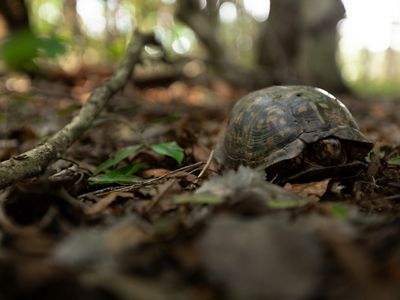
Restoring Longleaf Pine Forests
See how TNC is working to restore longleaf pine forests across the Southeast U.S.
Learn MoreFire is a natural part of the longleaf pine ecosystem
“The forest is the prettiest thing after a prescribed burn,” said Leah. “It’s pristine and cleared out almost down to the bare minerals. Weeks, months later and the grass and flowers start popping up. It’s beautiful.”
The Thiel family uses prescribed burns to manage the longleaf pine forests and reduce the risk of large wildfires on their roughly 600 acres of land in North Carolina’s Sandhills. While Leslie has now hung up her torch and her father has died, at one point the family had three generations burning together.
“We were fortunate enough to burn with my dad,” said Leslie. “He must have been 89. He was ageless for a while!”
Longleaf pine forests evolved with fire. They are a natural part of an ecosystem that used to cover about 90 million acres across the Southeast. But logging and development in the region decimated longleaf pine forests. They shrank to a historical low of 3.2 million acres before rebounding slightly to 5.2 million acres today. The Thiel family is doing their part to help continue the restoration of these forests by planting longleaf on their land.
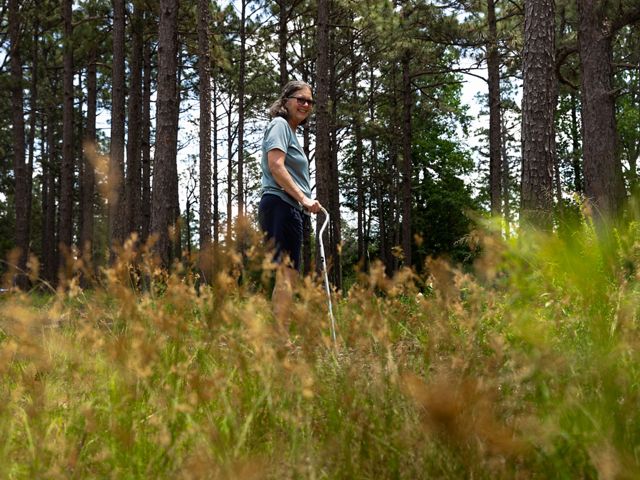
The Thiel family has been replanting longleaf pine on their land for more than 40 years
“We should bring the land back to what it was before the longleaf was all timbered or used for turpentine. We lost it all. They just devastated the woods and planted loblolly pine trees,” said Leslie. “My father started planting longleaf all around our land decades ago. Some of the trees he planted are now maybe 30 to 40 years old.”
Leslie’s father, Thomas, took over managing the family’s land about 40 years ago after he retired from the Navy and the Army Corps of Engineers. Thomas grew up on this land. The ruins of his childhood home still hide among the pines. A family cemetery houses centuries-old relatives. The connection that Thomas had to the land, and that Leslie and Leah now have, is personal. This land is a part of their family and its history.
“My grandmother always said they don’t make more land. It was my father’s desire to protect and restore it,” said Leslie. “And now, it’s something that I hope our family and future generations carry on.”
The Thiels can watch in real time as the longleaf forests retake the land because of how they stagger their reforestation. They have all stages of life, from two-year-old babies that are just growing out of looking like a blade of grass to the 40-year-old trees that Thomas planted.
Longleaf pine used to cover 90 million acres in the Southeast—TNC is working to restore it.
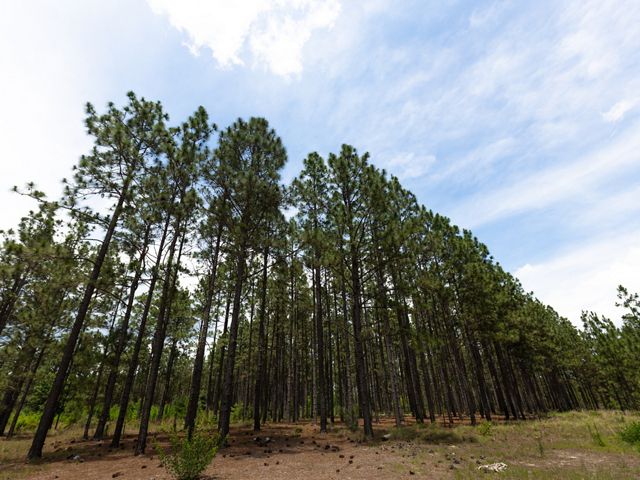
What is EQIP?
EQIP is a popular Farm Bill program and NRCS’ flagship conservation program. It helps farmers, ranchers and forest landowners integrate conservation practices into working lands. EQIP provides technical and financial assistance to producers and helps outline and implement conservation activities that address their unique natural resource concerns while improving their agricultural and forestry operations.
EQIP can help support landowners who want to restore longleaf pine to their land
“We stagger things to minimize the impact to the land as much as possible while still making a path forward to restore the longleaf ecosystem and promote a better environment for the animals,” said Leslie.
When the family moves to a new plot of land to reforest it, they oftentimes have to cut down any other trees that are already growing there, which is usually loblolly pine. Loblolly pine is a fast-growing tree that people widely planted across the region for timber. It took over a lot of the land that was formerly longleaf pine forest. Longleaf pines are not only the original inhabitants of the land, they’re also a good choice for restoration and conservation because they’re long lived, well adapted to living with fire, fairly pest resistant and their seeds provide food for many animals.
One of the ways that the family is able to pay for their restoration work is through federal programs and agreements with local land trusts. They work with the federal Environmental Quality Incentives Program (EQIP) to help fund their longleaf planting, prescribed burning and management of less desirable but fast-growing species such as loblolly. They also entered into a conservation easement with the Three Rivers Land Trust. This type of land agreement prevents development of the land and offers landowners like the Thiels tax breaks.
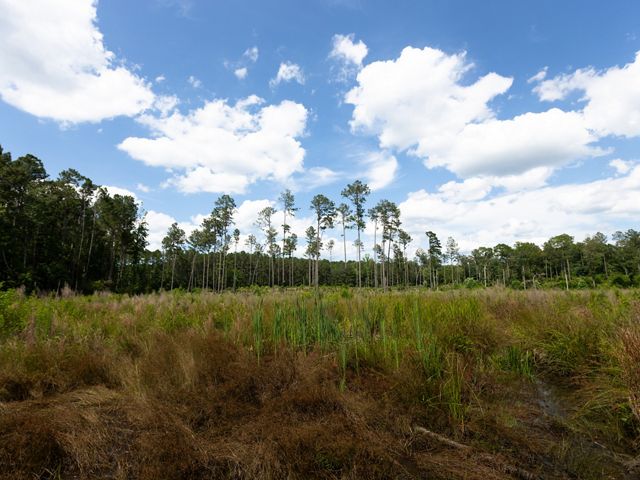
“Some people don’t have the means to afford this type of restoration. It’s important to make restoration doable for individuals or small families so they can protect their land and keep it going,” said Leah.
Their forest restoration work on the land is paying off. Just take a look at the goat’s rue, butterfly milkweed, gray indigo and many other native plants that provide habitat for wildlife such as frogs, salamanders, bobcats, king snakes, grey foxes, coyotes, butterflies and bobwhites. The Thiels are even excited about the black vultures that nest in their barn.
“They’re so cute when they’re babies, if you can believe it or not!” said Leah.
“Without timber money or if you don’t have a lot of pine straw to rake, it would be impossible to put as much focus on conservation as we do without these programs and easements,” said Leslie. “I would just love to see more people do the same.”
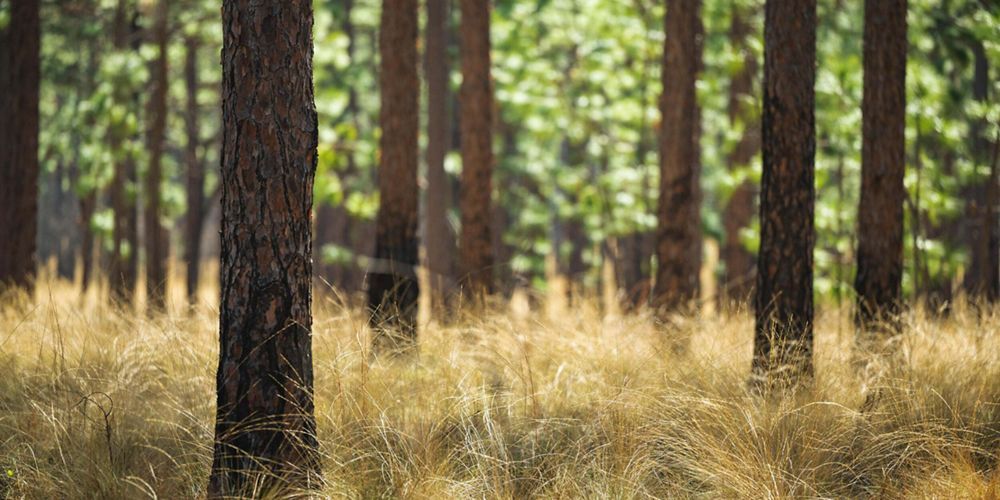
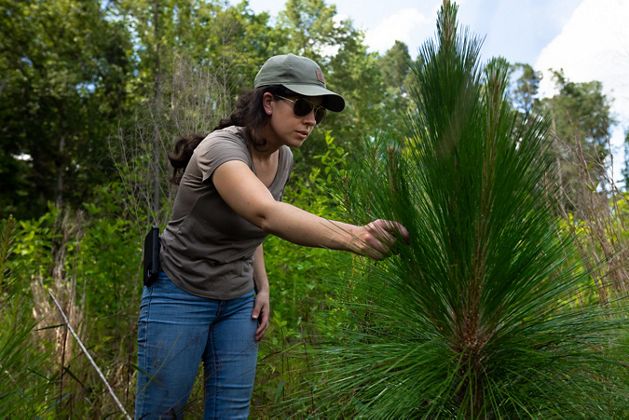
Stay in the Loop
Get conservation stories, news and local opportunities from where you live.
